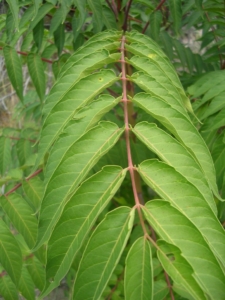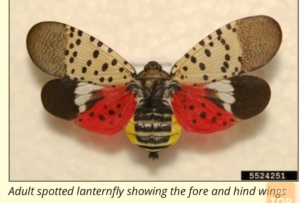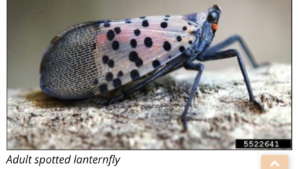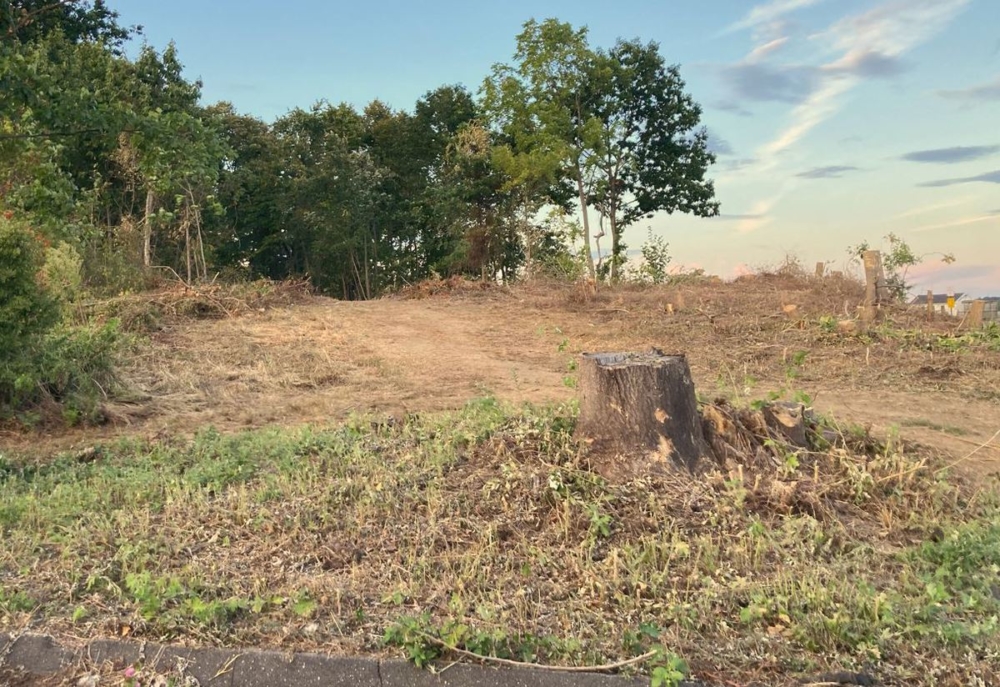Editor’s Note: Dr. David Chess, a member of the Inland Wetlands Committee and an avid environmental supporter, recently reached out to Kelly Kerrigan about the downing of trees at Shakespeare. In his conversation with Kerrigan he questioned the clear cutting of trees, and called upon Kerrigan to create a planting plan. The following email is her response.
by Kelly F. Kerrigan
Environmental Conservation Superintendent
Town of Stratford
Hi Dr. Chess,
As we discussed, the reason you have been seeing a large quantity of tree removals at Shakespeare is due to the presence of the invasive tree-of-heaven (Ailanthus altissima).
This tree is particularly aggressive, as it spreads by both seed and roots. Not only is this an invasive plant, but it is also the preferred host species to the invasive Spotted lanternfly (Lycorma delicatula), which was detected first in Pennsylvania in 2014, and just in CT in 2019, I believe.
The degree to which this invasion may negatively impact our forest health remains uncertain, but there is potential for this to cause significant economic damage, as this insect feeds on a laundry list of other species, including a variety of fruit trees, which may impact our agriculture as well.
Following removal of Ailanthus, we will continue monitoring and removals as necessary. Additionally, supplemental native tree species will be planted as needed.
Here is CT DEEPs fact page on the insect for more information:
https://portal.ct.gov/DEEP/Forestry/Forest-Protection/Spotted-Lanternfly#Why
https://portal.ct.gov/-/media/CAES/DOCUMENTS/Publications/Pest_Alerts/10-30-18-Tree-of-Heaven-ID.pdf
If you have any other questions, please let me know. Thank you!
Information on Tree-of-Heaven: Source: The Nature Conservancy
 What is the Tree-of-Heaven?
What is the Tree-of-Heaven?
The tree-of-heaven (Ailanthus altissima) is a rapidly growing deciduous tree native to China that has become a widespread invasive species across North America. Known by a number of names including stinking sumac, Chinese sumac, varnish tree and stink tree, the plant releases a strong, offensive smell, particularly from its flowers.
The tree-of-heaven was brought from China to the United States in the late 1700s as a horticultural specimen and shade tree. Its ease of establishment, rapid growth and absence of insect or disease problems made it popular when planning urban landscaping.
These same traits have led it to spread aggressively throughout the United States, crowding out native plants wherever it establishes itself. The tree-of-heaven crowds out native species and secretes a chemical into the soil that is toxic to surrounding plants.
Why is the tree-of-heaven a problem?
The tree-of-heaven is a problem because it reproduces very quickly and aggressively inhibits (and can even kill) native plants near it. This invasive plant produces an overly abundant amount of seeds, crowds out native species with its dense thickets and secretes a chemical into the soil that is toxic to surrounding plants.
When native plants are hindered or killed, it upsets the balance of the native ecosystem and biodiversity, potentially leading to extinctions of native plant and animal species across the whole ecosystem.
In fact, invasive species have directly contributed to the decline of 42% of the threatened and endangered species in the United States.
The tree-of-heaven affects people in many ways. Its aggressive root system can cause damage to pavement, sewers and building foundations.
 Tree-of-heaven and the Lanternfly
Tree-of-heaven and the Lanternfly
The plant has also helped advance the spread of the spotted lanternfly, an invasive insect also originally from China. These insects seek out the tree-of-heaven as a place to lay their eggs. The spotted lanternfly, currently spreading across Pennsylvania and the Mid-Atlantic U.S., feeds on and damages many species of native and fruit-bearing trees.
Climate change’s role with invasive species
Climate change is a threat to people and nature in many ways, one of which is how it can aid the spread of invasive species. The tree-of-heaven springs up quickly after forest disturbances such as extreme weather or gypsy moth infestations.
Climate change may be enabling these disturbances by disrupting weather patterns, leading to more extreme weather like stronger storms and longer droughts, which allow the gypsy moth to thrive.
 Controlling and managing the tree-of-heaven
Controlling and managing the tree-of-heaven
Thankfully there are multiple ways to get rid of the tree-of-heaven. The most effective way to control tree-of-heaven is to pull seedlings by hand before the taproot develops. If the plant has matured, cutting alone will only help temporarily by reducing its ability to spread.
It’s important to correctly identify the tree-of-heaven since it looks similar to some native species. Several native trees and shrubs also have pinnately compound leaves (arranged in pairs across the plant’s stem) such as sumac, ash and black walnut.
It can be distinguished from these native species by its fuzzy, reddish-brown twigs and clusters of light green seed pods.



